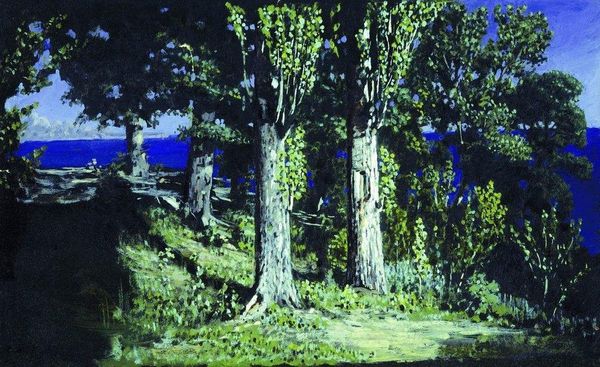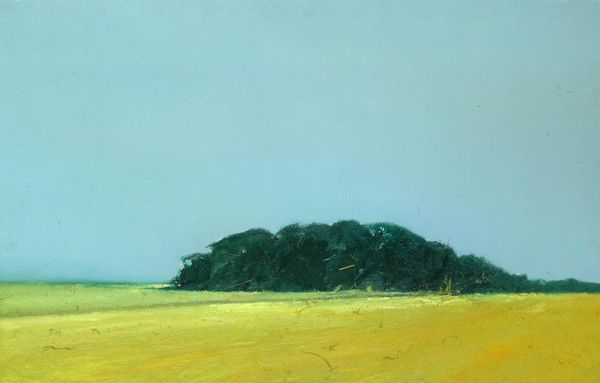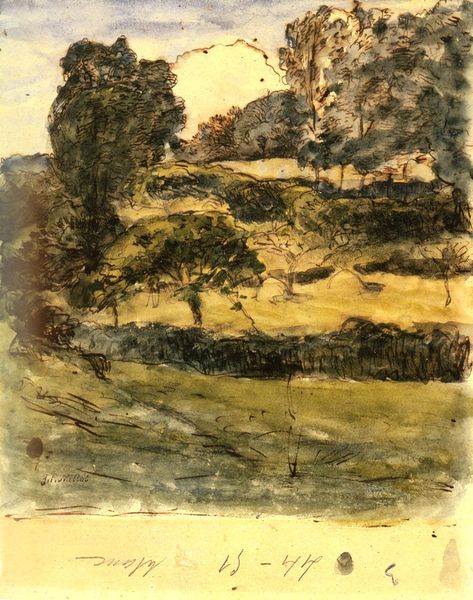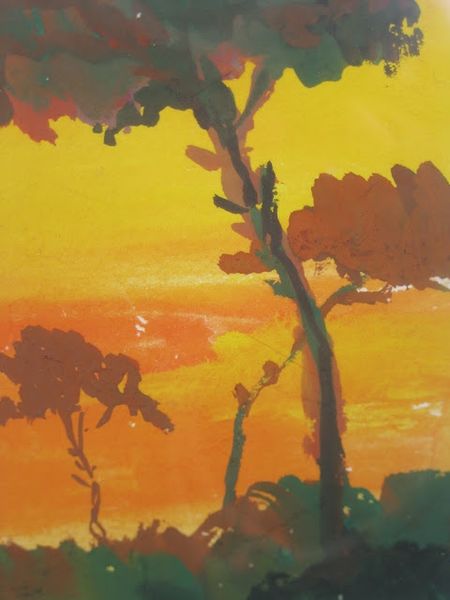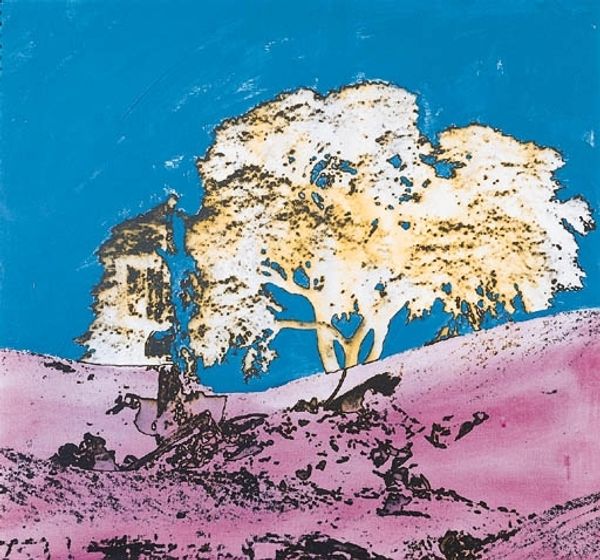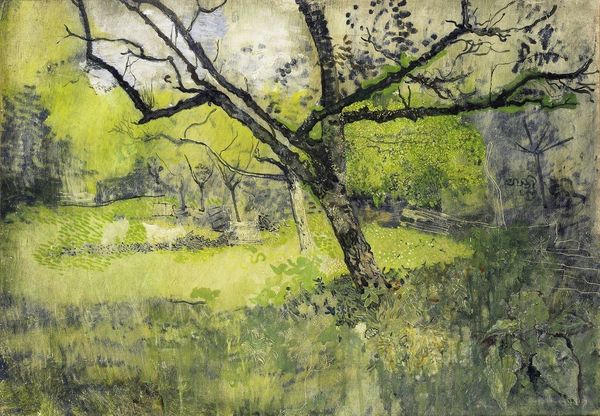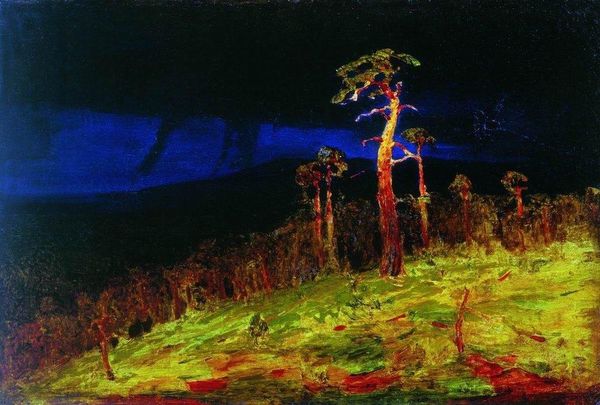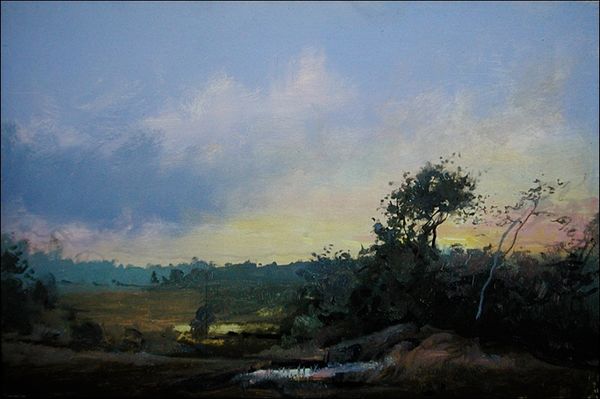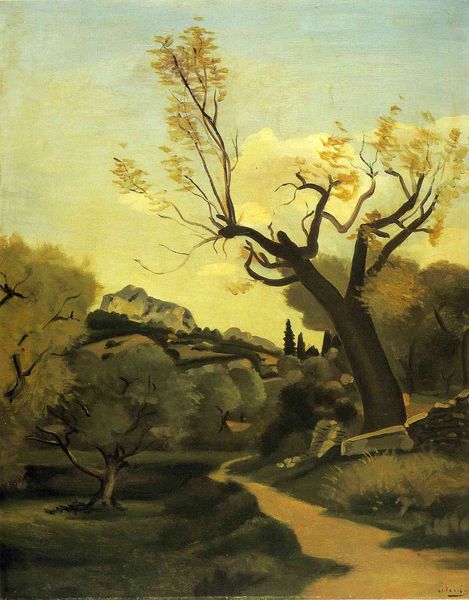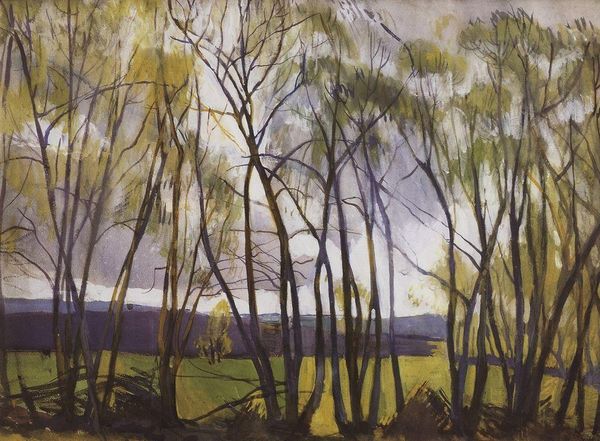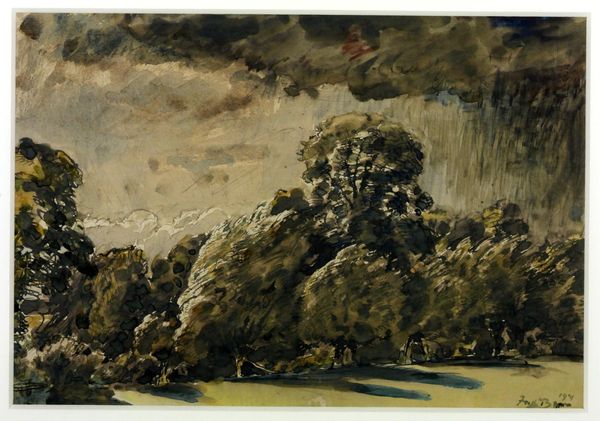
Dimensions: 23.5 x 37.5 cm
Copyright: Public domain
Curator: Let's discuss Arkhyp Kuindzhi’s oil-on-canvas painting, “Grove,” created in 1908. What strikes you initially about its formal qualities? Editor: I find the dark palette both enveloping and unsettling. The sharp contrast of light breaking through what looks like dense foliage certainly catches the eye, but the overall impression leans toward the ominous. Curator: The composition is intriguing, wouldn't you say? Observe how the dark, enclosing trees frame that central burst of illumination, almost stage-lighting the sunlit clearing below. How does that contribute to the viewing experience? Editor: This "stage lighting" highlights the tension between the obscured space we occupy as viewers, the darkness of the surrounding trees and foliage—perhaps representing historical and social realities that often get obscured. Who exactly benefits from such sun-drenched displays? Are the laborers who presumably work this land among those visible to the wealthy landowners of Kuindzhi's time? Curator: Your reading offers an interesting social context. Shifting our attention back to the paint itself, note the textured brushwork, particularly in the areas of light. The post-impressionist handling gives it a shimmering, almost ethereal quality, defying a purely realist portrayal. What sort of meaning might arise from this stylistic choice, considering, of course, Kuindzhi’s background as a Russian artist of Greek descent? Editor: Well, if we acknowledge Kuindzhi's experience as a minority voice often navigating political complexities within a multi-ethnic society, this choice of portraying laborers anonymously may indeed become the point itself—are those enjoying the land aware of who provides such abundance? Do they want to know? Curator: A compelling, albeit uncomfortable, reading of the work! For me, ultimately, this composition and interplay of light invite inward contemplation. I get the sense that Kuindzhi pushes representational boundaries while still creating an intimate encounter with the painted surface and all the possibilities inherent to art making. Editor: Agreed; Kuindzhi forces us to think more deeply about art’s relationship to both visibility and the sociohistorical narrative it often conceals.
Comments
No comments
Be the first to comment and join the conversation on the ultimate creative platform.
